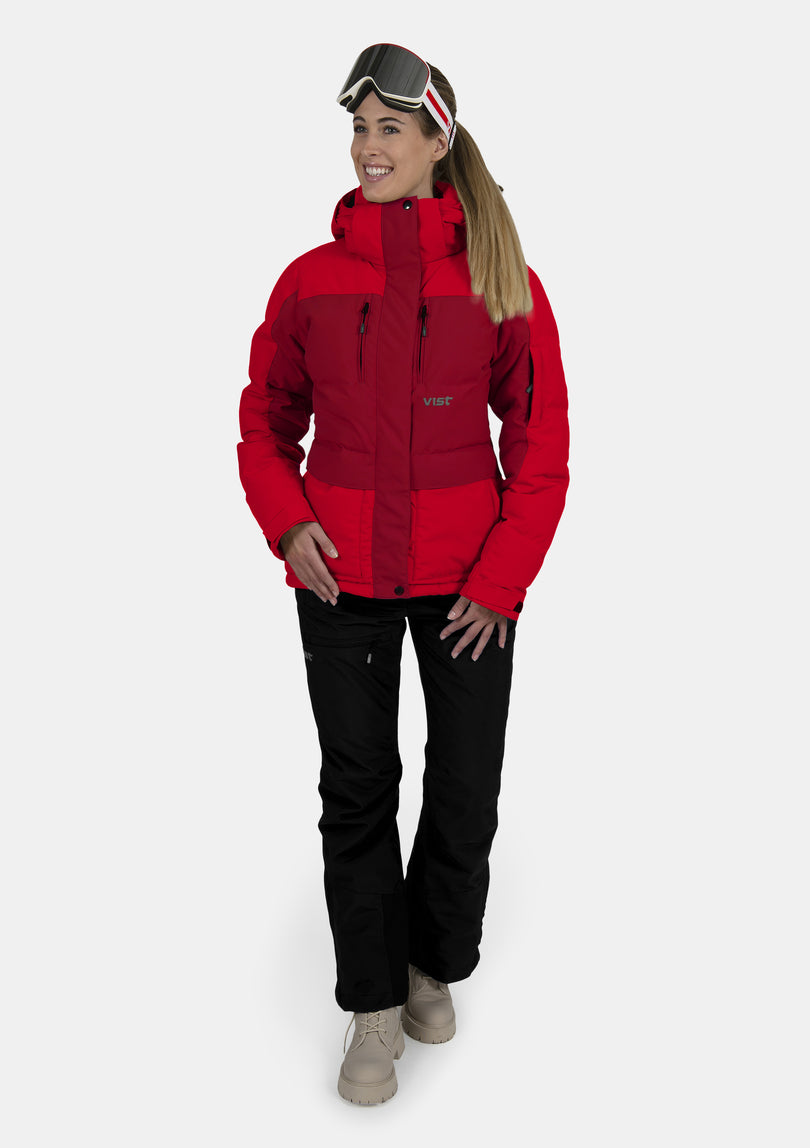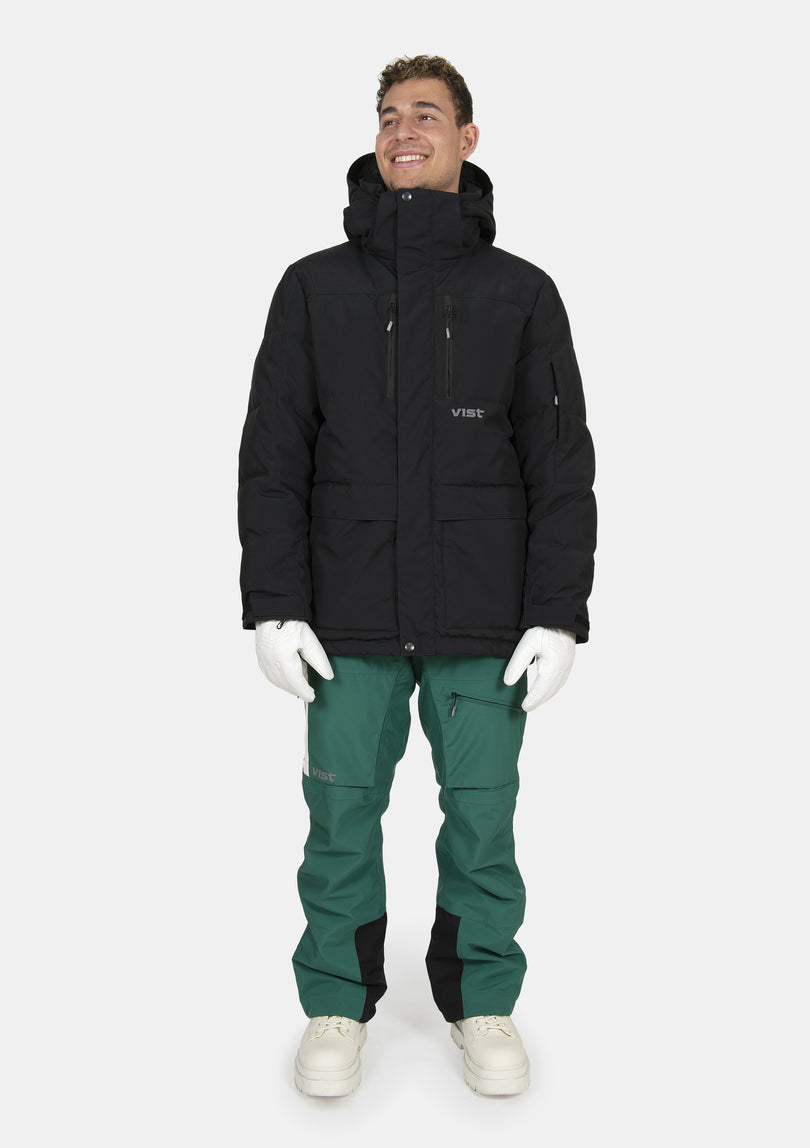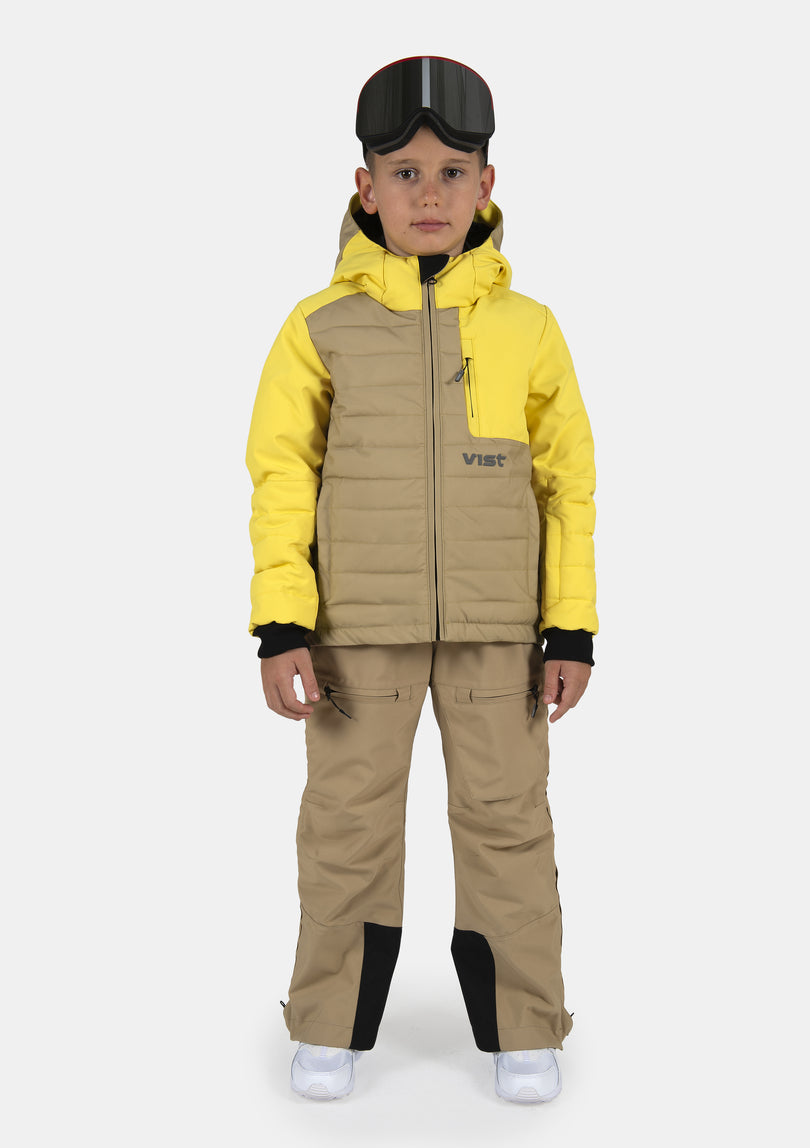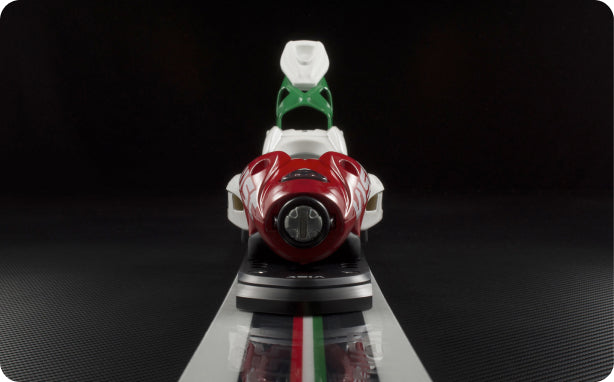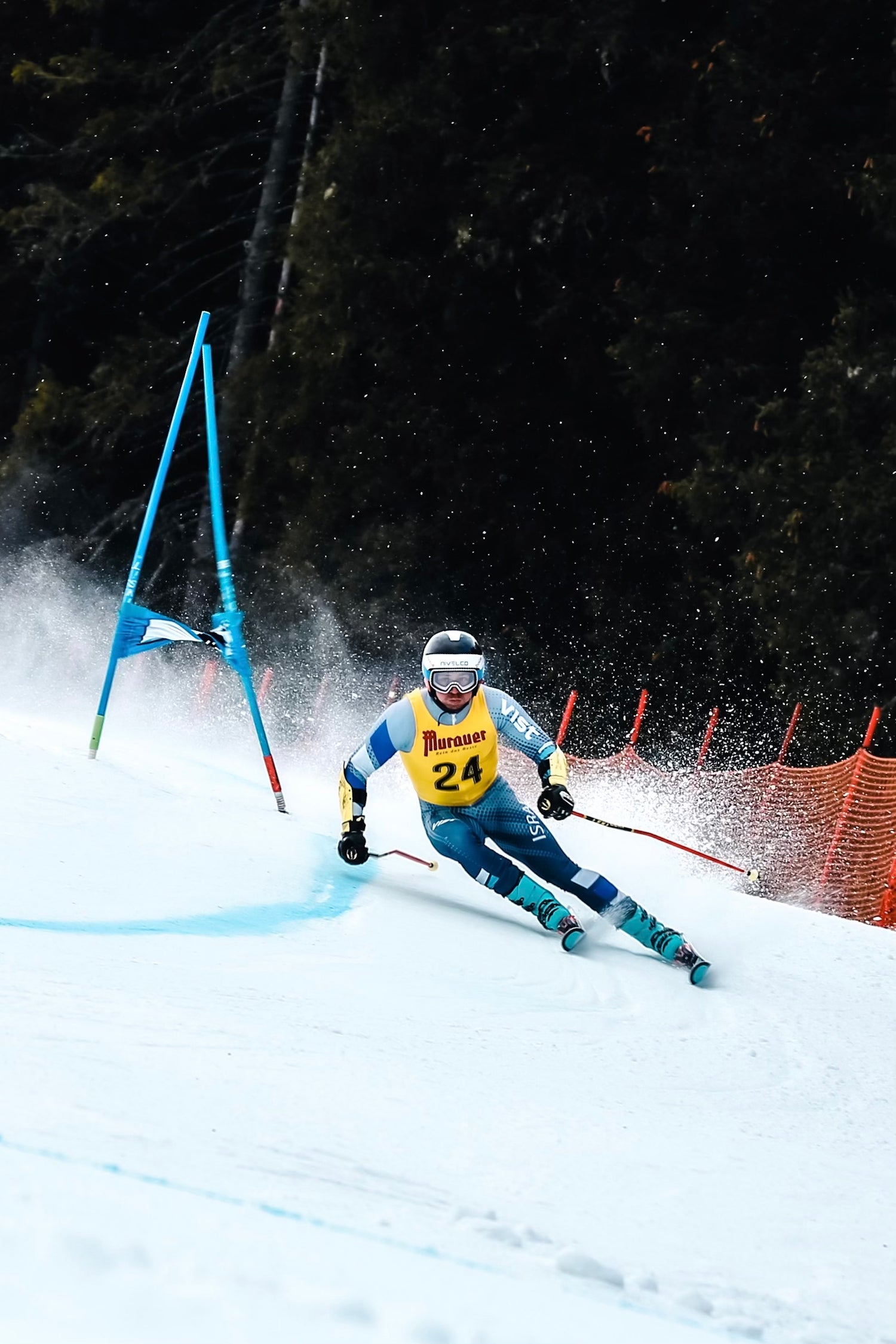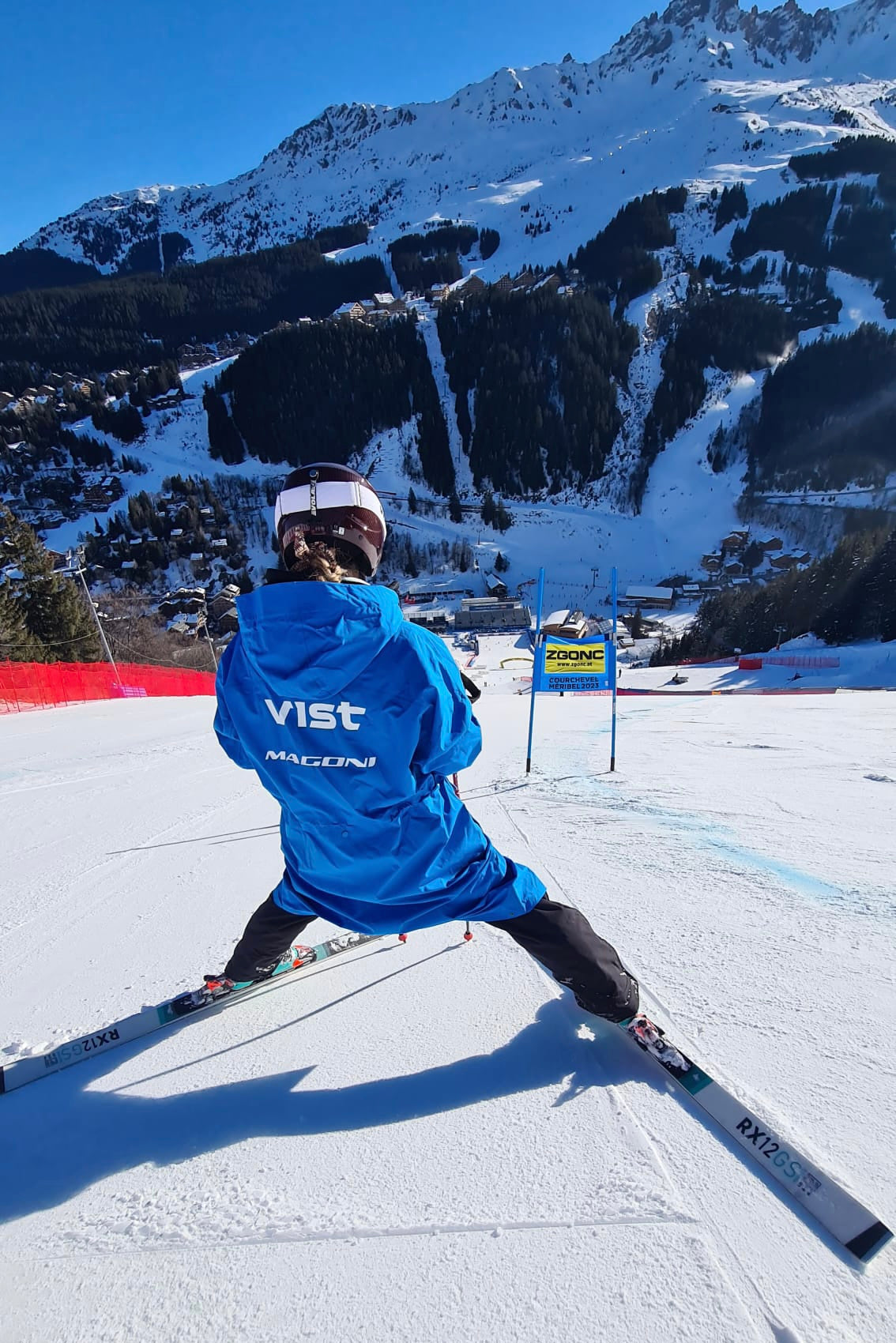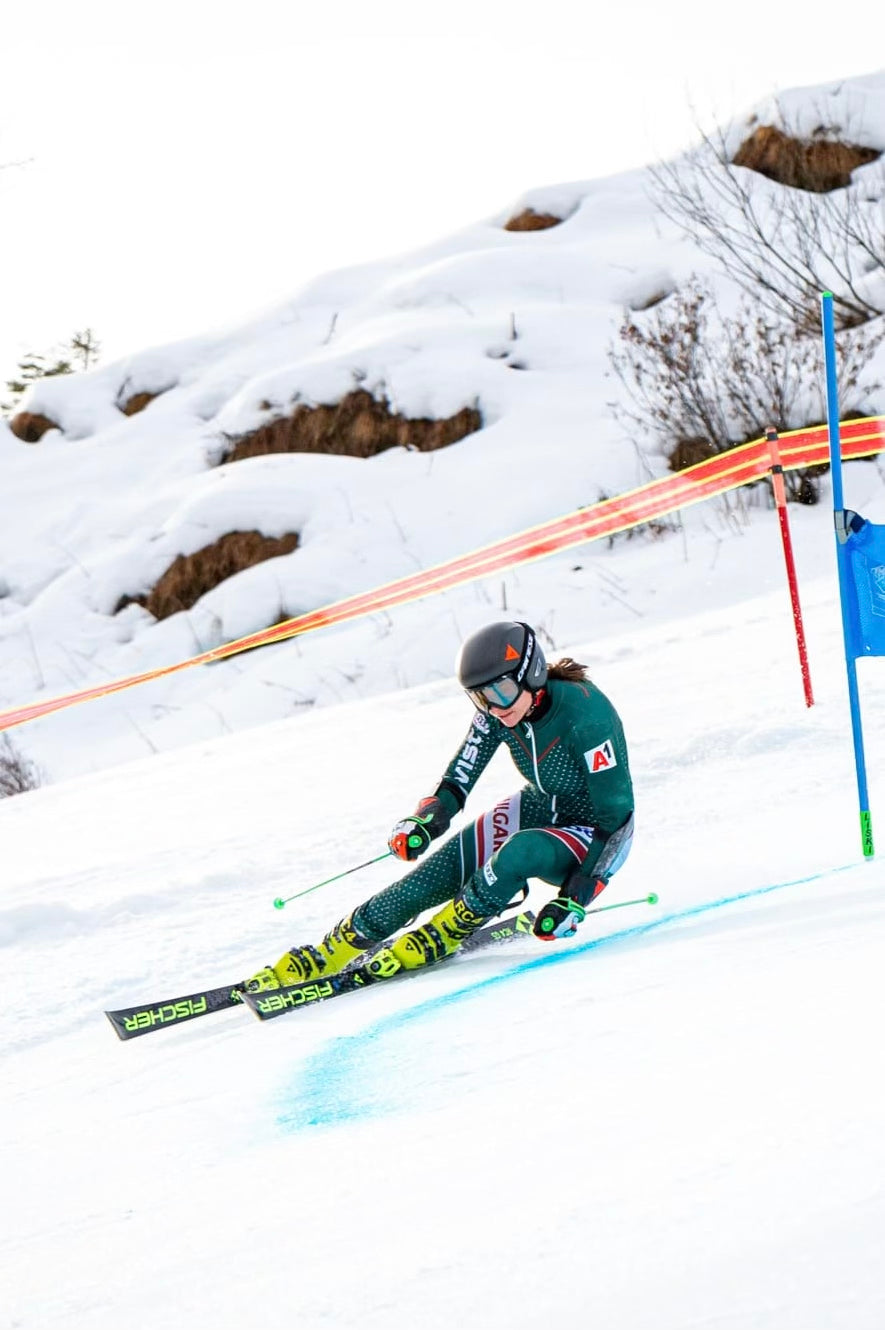At the Schladming World Cup this year (Jan 2023), we asked some of the world’s most elite coaches and athletes “What does it takes to make The Perfect Turn?” – well, turns out, the perfect turn involves a lot of physics. So, here are the top 3 tips that they all agreed upon, and a little lesson on energy transformation:
- Engage the top of the turn.
This is always rule #1 if you want to execute a strong carving turn, or any turn as a matter of fact. The pressure on your ski must begin before the ski faces the “fall line”. The fall line is essentially the middle of the turn, i.e., it’s the moment at which your skis are facing exactly down the hill. The world cup coaches made it very clear that you must put almost all your weight on the outside ski before you reach this middle section of the turn – in this way, you are gradually building pressure on your ski, to make the ski turn faster.
Physics Fact! – this is known as the build-up “potential energy”. The build-up of ‘potential energy’ is essential, as this is what gives the ski the ability to use “kinetic energy”; kinetic energy is the energy that your ski uses to turn fast, powerfully, and efficiently.
The best ski racers in the world are the ones that use the top of the turn most efficiently. They would find the smoothest build-up of pressure, with as little spray and strange movements as possible.
- Stay over the outside ski
Now that you’ve nailed the top part of the turn, you are ready to whip the ski. Coming into the fall line, the momentum increases. The ski uses this momentum to arc the turn. At this stage, you only have one job – stay on top of your ski! If you are leaning too far back, your ski can get away from you. Therefore, make sure you are leaning over it – in this way, you are controlling your ski, and your ski is not controlling you.
Some of the coaches offered a great tactic to analyse if you are, in fact, over your outside ski: Observe that your shoulders are ‘lined up’. If your inside shoulder is lower than your outside shoulder, you are most likely leaning on the inside ski. If, by contrary, your shoulders are in line, or your outside shoulder is lower than your inside, you are most likely on your outside ski.
- Keep the Tension!
Keeping the tension throughout the turn is critical. Specifically, make sure your legs and core are always engaged. This allows you to react efficiently to any impacts, or changes of terrain, during the turn.

